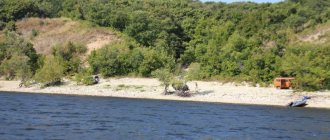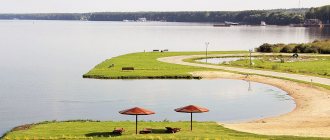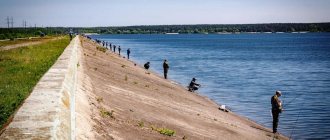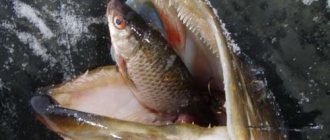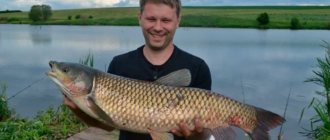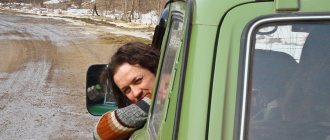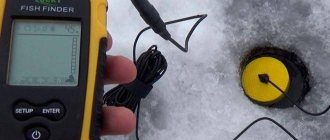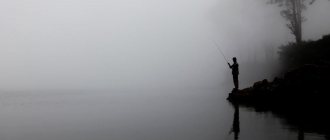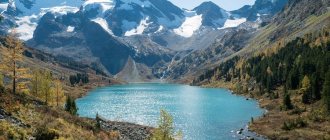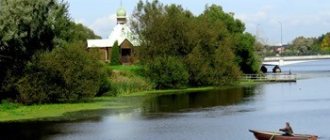Unexpectedly, I had a day and a half of free time to go somewhere. Yes, and not just me, but also my friend, with whom we have not traveled anywhere together for several years. We still remember our tour of Russia with him as one of the best trips of our lives. So, if you go out, then definitely with a tent, since this type of recreation and travel always comes first for me. It was decided to go to the Oka along the Simferopol highway.
Rest on the Oka
The post is rather informational (similar to the article about vacationing on the Black Sea with a tent), because we rode all day and looked at where we could pitch a tent, but I can’t help but write about vacationing on the Oka. Guys, this is trash! After Thailand, the Krasnodar Territory, Seliger, everything is so sad that I was even upset. Probably, nature lovers need to travel not 100 km from Moscow, but already 200-300, otherwise you will be as upset as I am. Well, or not go to such popular places as Oka, or even not to a body of water at all. Alternatively, look for places where you can’t get there by car, but then you’ll have to go on a hike to the Oka, if not by car. And the sunset is, of course, beautiful, yes, regardless of anything...
Rest with tents on the Oka River
The first is garbage. I will never understand this, why shit where you yourself rest. In reality, there is a lot of garbage, and it’s in parking lots. Bottles, bags, bulls and more. There are dirtier places, and there are cleaner places, so you have to go and look. The alternative is to remove the garbage and burn it (and that’s what we did), but that’s only if there’s not much of it. Otherwise, your vacation will turn into a waste collection/incineration event. There are also waste products here and there. I don’t understand that it’s difficult to move further away, where no one walks? Or, if it’s scary to go far, then you can’t take a spatula and dig it in?
Secondly, the river is dirty. After the seas and oceans, I don’t know how you can swim in this. The water is cloudy, there is a strong smell of mud, algae, the bottom is partially filled with sand, stones, silt and tires. People, of course, swim, many come with children all summer and don’t see anything negative about it, but I couldn’t bring myself to swim there. Perhaps the reason for the smell and dirt is that it has been hot for several weeks, and the Oka River has become shallow.
It would be interesting to hear comments from those who go there often, where does the strong smell come from? And what was it like 10 years ago, better or the same? It seems to me that in general Oka is not the best choice for swimming, because Rospotrebnadzor periodically prohibits swimming in it, either in the Serpukhov region or in Kaluga, due to all sorts of infections.
Impressions from a trip to Oka
Guys, it’s very beautiful there, it’s quite clean and they’re not too far from Moscow that I’d go there every weekend. I would also love to spend a summer vacation there with a tent. Would I advise you to go there? Undoubtedly)
And we move on! If you know good places for a beach holiday, located near Moscow, where you can not only sunbathe, but also have a good swim, then write to me in the comments .
We'll definitely get together and prepare a thorough report! Share
Tent sites on the Oka River
This post was written a couple of years ago, so the information is outdated. Judging by the comments, everything has become even worse than when I went.
Okay, I’ll go through the places for tents, but ideally it’s better to set aside time for searching at least on the first trip, so that you can travel along the banks and look for where you like best. Let me remind you that among the nearby attractions (well, if you get tired of sitting in a tent), there is the Pushchino estate and the Prioksko-Terrasny Nature Reserve.
Naturally, there are much more places for tents; in the post we only cover what we covered during the day. Alternatively, you can go somewhere to the Oka and then drive along it all the time, because in many places along the river there is a good dirt road. But every time we went back to the track. Don't forget about the satellite map, it's much easier to navigate than a regular one.
Left Coast
In my opinion, the left bank is dirtier and more crowded. We went to several places and didn’t want to stay anywhere. And the beach is also bad, there is more silt than sand, and sometimes there is no sand at all.
Near Karpova Polyana. There is no access to the river, but the clearing is located deep in the forest, on the banks of a stinking pond (you can’t swim!), quiet and calm. It's difficult to get there with a regular car, there's sand and potholes. We didn’t get there, we stood closer to the asphalt, it was late, we had to spend the night somewhere. Turn onto the dirt road right after Karpova Polyana, there is a gate to nowhere next to the turn.
Road with sand, you can get stuck
Parking near the pond
Village of Priluki. The end of the road, although on the map it continues further. In the village you need to turn right near the trash can, after 50 meters inside the village again to the right, and after another 50 meters left to the river, through the gate. Between the village and the river you will see various dirt roads; you can drive along them along the shore and look for a place. Mostly people stop right in front of Priluki. Dirty and crowded.
The beach in Pryluky only looks good from afar
Near Nikiforovo. We turn at the sign for the village and drive in a straight line without turning anywhere straight to the river, even when the asphalt road turns towards Zibrovo, that is, at this point we drive onto a dirt road. Once near the river, we go right or left along the dirt road and look for a place. I didn’t take any photos because we only saw one parking lot, and it had no normal bank, just grass.
Near the spring. This is another road leading to Meadows and the Republic. The turn to the source is indicated on the road with a sign. But you don’t need to go straight to it (it’s about 50 meters from the road), but turn right almost immediately onto the road with slabs. Closer to the river you will see concrete fences; you need to drive further and look for a place. It's so-so, dirty and the shore is bad, although people come here for fishing. We just collected water from the spring.
The shore is more for fishing than for swimming
Between Luzhki and the Republic. We pass Meadows, where there are also quite a lot of people swimming, despite the steep ramps. And after Luzhkov there are a number of dirt roads that lead to the river. We reach the Oka River and there is a dirt road along the shore, we drive along it, looking for a place. The parking lot we saw had a decent amount of garbage. Perhaps the neighboring ones are better.
There is a lot of garbage, but people are standing. Standing with a tent on the Oka River.
Right Bank
The right bank looks more attractive (although maybe we were just unlucky on the left). We immediately noticed several tents across the river from Priluki, and so we immediately went to this place.
Pushchino. Another option is to swim right in the city, where the Pushchino estate and the ecological trail are located. There is also a font with water from a spring, where you can then wash off all the dirt of the Oka. You can also camp here with a tent, but you need to understand that this is very close to the city.
Beach in Pushchino
There are places with fewer people
Near Krasino-Uberezhnoe. It’s better to go from the M4, it’s much closer and the road is better, we drove from Pushchino and spent a couple of hours on it, I don’t recommend it. There are a lot of turns, so it’s easier using the azimuth/navigator. First, from the M4 turn to Taraskovo, get to Grigorievsky, turn to the greenhouses (huge greenhouses occupy the entire field), past them and to the bank of the Oka. There is a good dirt road along the Oka River, and there are turns off from it to parking lots. In my opinion, here are the best places, and it’s relatively clean, and quiet, and there’s nothing on the shore.
Nice place with a good beach, but almost always busy
Descent to the Oka River and the beach
Oka River from source to mouth: condition, problems, preliminary conclusions and proposals.
Russian Geographical Society.
Moscow regional branch.
Oka River from source to mouth:
status, problems, preliminary conclusions and proposals.
(Based on the results of the implementation of the public project: “Expedition Great Rivers of Russia from source to mouth” in 2021. Continuation from the border of the Moscow and Kaluga regions. Start published on December 31, 2018.)
About the project implementation:
Start of the project June 5, 2015 In 2015, the river was surveyed. Don and its three tributaries.
In 2021, the river was examined. Oka from the source to the border of the Moscow region (Drakino village). Four small rivers were examined in the city of Serpukhov, Moscow region.
In 2021, the Moscow River from source to mouth and the Sushka River in the area of Serpukhov were surveyed.
In 2021, a new stage of project implementation began: we received a Presidential grant provided by the Presidential Grants Foundation.
So, we continue to explore the Oka River.
The boat parking in the village of Drakino is still working. They accept everyone for 300 rubles. per day. Launching a boat costs 500 rubles, free for daily parking.
There is a free entrance for boats to the quarries on the right bank of the Oka River near the villages of Lanshino and Podmoklovo and on the left bank behind the railway bridge. There are many fishermen and vacationers here. In total, there are eight exhausted quarries in the Serpukhov area and all of them, as a rule, have been turned into a favorite place for recreation and fishing. One often reads that these quarries “have led to the shallowing of the river”, “disturb the ecology...”, etc. We didn't see anything like that. In general, it’s strange to read that the river has become shallow because of these quarries. (f-5494.96)
In Serpukhov, on the Nara River, there is a Yacht Club with 200 seats. There are no free places. The cost per month is on average 5,500 rubles. There is a gas station. They sell AI-95 gasoline for 49 rubles. 85 kopecks
Nearby, on the left bank of the Nara, the city’s wastewater treatment plants are located. There are no external signs of water pollution in Nara and Oka, except for foam on the water, which dissolves after 100 meters. (f-5517.7548)
Behind the Simferopol highway, near the village of Luzhki, there is another yacht club with a parking lot and a restaurant. It was not possible to find out the conditions. And in the science city of Pushchino, just downstream there is a boat station. They accept everyone for 100 rubles. per day. There is no gas station.
There are modern cottages in the villages on the left bank. The Oka is wide and seems to be full of water, there are a lot of vacationers and cars along the banks. (f-5559.61)
We meet the first dredger. He is trying to deepen the fairway, but we don’t see any shipping.
In the area of Stupino, in the village of Sokolova Pustyn, along the shore there are boat garages, converted into 2-3-story country houses. I saw this only on the Don in the Novo-Voronezh region. (f-5555.70)
The view of the city of Kashira is memorable for its churches. After the railway bridge, around the bend, on the right is the legendary Kashirskaya State District Power Plant. There are no visible signs of water pollution below the power plant. (f-5583.93)
On the approach to the pontoon bridge in Ozyory, the terrain changed. The right bank is high. We pass the bridge for our boat. (f-5600.03)
Along the banks there are exotic and ordinary recreational facilities. In Ignatyevo, despite the strong wind, there are a lot of people and cars on the beach. On the outskirts there is a loading area for sand and crushed stone from a nearby dry quarry. (f-5614.18)
Kolomna celebrates Navy Day. No one was found at the boat station... It is not reasonable to try to meet with government officials and see the work of the treatment facilities on weekends and holidays.
According to all data, the quality of water in the river after Kolomna is deteriorating sharply. Who makes the biggest contribution needs to be sorted out by the relevant services. Even the satellite image shows that the water in the Moscow River is much darker, and in winter, after the confluence of the Moscow River, the ice freezes later... (f-5627.29)
Before Dedinovo the landscape is monotonous, the river is wide, there are few vacationers. In Dedinovo, the ferry crossing is being reconstructed, at the mouth of the Tsna River there is a Temple and a memorial sign in honor of the launching of the first warship in Russia - the frigate "Orel" (f-5650.60)
The Beloomut waterworks went through without any problems. The water level at this hydroelectric complex has been raised by 2.5-3 meters. After 50 km. second hydroelectric complex Kuzminskoye. It is less monumental than in Beloomut, but the water level here is raised to 4-4.5 meters. I remembered criticism on the Internet about the irrationality of such low-pressure dams. Critics propose making a combined dam with a bridge and a hydroelectric power station. This is cost effective. It’s difficult to judge, but from a business perspective it seems that they are right. (f-5681.5719)
Between the waterworks, the river is mostly deserted. We are observing a modern landslide; on the shore, the shore is being eroded. In the area of Konstantinovo, Yesenin’s birthplace, the landscapes are picturesque. There is a lot of information on the Internet, we won’t add more. F-5700.10)
The river has become even more deserted, and modern cottages are less visible. Large sand spits and eroded banks appeared along the banks. And now, around the bend, Ryazan is visible. (f-5732.38)
We moored at the mouth of the Trubezh River. About 400 meters away there is a former pier; now there is practically no shipping, but a bus comes here regularly. There is a lot of garbage and bottles on the shore and in the forest park. Colleagues noticed that they drank very expensive vodka and average beer. In general, people are not poor, but they haven’t learned to take trash and empty bottles with them... I know, I know, “the administration is obliged to organize...”, but we ourselves, why can’t we take away empty bottles...? This is to the question that we all ourselves must learn to wipe the snot under our own noses... We had to spend the cleanup ourselves at the place where we were staying. (f-5744, 56912)
The head of the water resources department of the Ministry of Natural Resources of the Ryazan region immediately agreed to accept us. A thorough, honest conversation took place on all issues of interest to us. There are six people in the department. There is also a federal department in the city.
We didn’t go to the treatment plant; it is operated by the Petrochemical Complex, a complicated approval procedure. According to department employees, the treatment facilities are working well. But judging by the analytical control indicators, the total BOD slightly exceeds the norm. There are no external signs of contamination visible at the discharge of treated wastewater.
After the meeting ended, the head of the department decided to report the results to the minister, and he also invited us to his place. A thorough exchange of views took place.
The situation is similar to that in other areas of the Don and Oka basin: the rivers have no real owner. There are no comprehensive events, there are only those for which there is money. As a result, the overall scale of water resource problems is unclear. (f-53243)
The yacht club in Ryazan is located on the left bank of the Oka, behind the road bridge on Solochinskoye Highway. There is security. You can call a taxi here from Ryazan. The prices are steep. (f-5760.61)
Treated wastewater from Ryazan treatment facilities is discharged into the Listvyanka River. At the confluence with the Oka there is a cascade of large waterfalls. There are no signs of contamination to taste, smell or touch. The color is a little cloudy. Fishermen are fishing nearby, but some locals claim that sometimes the current carries dead fish. (f-5762.63)
Before the pontoon bridge in Trinity, the banks are low and eroded. The river is deserted. The bridge is not passable for any boat . The crossing workers scheduled the opening of the bridge for 8-30 am. (f-5771.80)
The coastline in Trinity is actively eroding. For the first time we meet a large herd of cows. The river is cold, windy and deserted. (f-5781,5784)
On the right high bank there are modern cottages. The ancient settlement “Old Ryazan” is located not far from here. (f-5795.98)
The pontoon bridge near the village of Spassk-Ryazansky is also impassable for any boat. There are rare fishermen on the river, sometimes there is picturesque terrain along the banks, (f-5800.05)
Shilovo is a regional center. About 20 years ago there was a pier here, today there is a convenient boat ramp, bank protection, a hotel, GIMS. There is a shopping center, a building materials and tools store 200 meters away.
At the administration of the Shilovsky district we were received by the deputy head of the administration, responsible for urban management, construction, land use and nature conservation. There are two people on staff who, along with other issues, are also responsible for nature conservation. No money, no program. In general, the situation is the same as in the vast majority of municipalities.
It’s a rare case, but the deputy head took us to the treatment plant personally and it’s a rare case that treatment plants in such settlements operate at 3+. Operated by a private entity. The general director has a good understanding of the technology, and the head of the treatment plant also confidently explains everything. The equipment is very shabby, but it works. All cleaning flaws are compensated by extensive filtration fields. They are waiting for money to build new buildings. Naturally, there are none of our own. The project has been developed. (f-5839, 41)
Sand spits began to appear in the river (especially the large one opposite the village of Svinchus), and eroded banks (the village of Kopanovo). We pass through the Meshcherskaya lowland. Numerous oxbow lakes are visible in space photographs. (f-5881.84)
An original two-story raft is moored near the shore. A team of men and children rafts along sections of the river, periodically taking turns. Only the captain is permanent. This commercial service is the beginning of the development of tourism along the Oka River. A man with a child is late for work and asked to come to us in the village of Rubetskoye, he has a car parked there. We got there. (f-5907.09)
The banks are low, the sands give way to eroded cliffs, and there are many vacationer camps on the river. (f-5913.14)
Stone dams began to appear along the banks below the village of Rubetskoye, narrowing the river bed. I saw this on the Don too. This is done to increase the speed of water flow in order to flush the fairway. On the approach to the city of Kasymov there is an active quarry on the right bank. (f-5940.48)
The city of Kasimov opens from the river with many churches. The city itself is different, mostly clean, but some of the roads on the streets are bad.
The head of the Kasimovsky district was just elected a few months ago. He personally supervises issues of environmental management and conservation and received us personally. There is one employee in charge of these issues. The head agrees that little work is done on environmental protection at the municipal level. The situation here is standard: no money, no program, the scale of the problems is not clear. By the way, he himself is well versed in the problems, he talks from memory about the situation with treatment facilities, municipal waste in the area, etc.
But neither the head nor those responsible could be found in the city. There is no special employee. The housing and communal services department could not explain anything about the operation of the treatment facilities, but they think that they are working normally. They declined to organize our trip to the treatment plant. The company operating the wastewater treatment plant is in the process of bankruptcy and no one dared to agree on our visit. It's difficult to get there without a car. Let's look at the purity of the wastewater at the Oka discharge. (f-5977.84)
The water in the stream, where treated wastewater from the city's main wastewater treatment plants is discharged, is clean. There are no obvious signs of contamination by smell or color. (f-6010.13)
Vacationers' camps are regularly found along the banks. The shores are mostly low and are actively eroded, but sometimes small hills approach the shore. (f-6020.46)
In the village of Elatma, on the shore near the ferry, locals store their boats. The village looks clean, but with “dead” roads. There is a modern physical education complex, a functioning church, and a secondary school. (f-6062.65)
In the Vladimir region, along the banks we often see wooden boats; there are almost no modern boats. And there is devastation on the river. The red buoys along the river have not been painted for a long time; there is almost no navigation. (6084.96)
The ship repair plant in the village of Shimorskoye, judging by the state of the territory, is not working. Near a village, there is a wooden boat on the shore. (f-6101.04)
Sometimes there are bank erosions that threaten individual houses. The river is mostly deserted, but sometimes there are lonely ships. (f-6111.17)
The city of Murom attracts attention from the river with its tall church. There are modern cottages on the shore. (f-6130.33)
We spent the night at the former ferry crossing. Now a modern road bridge has been built downstream. (f-6160.61)
There is an asphalt road from the pier to the city. 600 meters to the center. On the left is a 900-meter embankment. On the Oka River we saw such an embankment only in Oryol! The monument to Ilya Muromets is visible from the pier. (f-6138.57)
There is a small square in front of the monastery. Groups gather here for excursions. (6144.45)
The streets in the center are clean. The houses are well maintained. On the square in front of the administration there is a fountain and a monument to Lenin. (f-6146.49)
Sovetskaya Street is closed to traffic, they are probably going to build, the park is clean, people are walking. (f-6150.53)
From the observation deck near the monument to Ilya Muromets there is a view of the Oka River. (f-6154.55)
It rained all night. Despite the squally wind we continue moving. In front of the road bridge on the left bank there is a boat parking area with free spaces. (f-6164.69)
Behind the bridge, on the right bank, there is a barge with scrap metal. Looks like she's broke. A crane and a barge with sand were dragged upstream. This is the largest concentration of ships along the entire route. (f-6174.81)
The river is still deserted. Hills appeared along the right bank. This gave some variety. (f-6184.86,)
Another dredger continues to deepen the fairway, although, as we see, there is practically no traffic. Landslides with reddish clay and layers of limestone appeared. (6193.98)
In the Nizhny Novgorod region, a feature has appeared in the arrangement of recreation and fishing places. More permanent accommodations and mostly wooden boats are built here. These are mainly residents of the region. There are fewer Muscovites here. (6199, 6200)
Suddenly, our boat collided with some floats that were not visible against the background of the waves. It's probably the networks. Then we found out that in the Nizhny Novgorod region you can get a license for industrial fishing. There was no one on the shore or in the hut, and we did not find out what was there. The river is still eroding its banks. Along the banks of the fishermen's base. Everyone complains about the lack of fish, but you can catch about five kilograms. And in Murom, young guys explained that there is a lot of fish: in one night you can catch 50-70 kg with a 75-meter net. fish, but this is poaching (f-6216.29)
There are few settlements along the banks of the river, but some go straight to the water. (f-6235.38)
The city of Pavlovo is located on a high bank. There is a pontoon bridge that is passable for our boat. (f-6247.52)
Pavlovo is an ancient city, but it is here that the famous PAZiki buses are made. On the shore, near the pontoon bridge, there is a shopping area. People began to be transported in this place at the beginning of the 20th century. (f-6256.63)
Downstream from the bridge, on the right bank, there are picturesque hills that are subject to modern erosion. (f-6273.79)
Treated wastewater from the Pavlovo sewage treatment plant is discharged into the Kaska River two kilometers above its mouth. At the mouth, the water in the river is without visible or tangible signs of pollution. (f-6282.83)
The right bank of the Oka is high, traces of modern erosion are visible, and in some places layers of different rocks are clearly visible. The left bank is low, in some places we see a cluster of buildings and cars of vacationers. (f-6286.89)
The village of Gorbatov on the right bank is located mainly on a hill. On the outskirts, downstream, there is a base for technical sections of the route and a hydrological post. The duty officer says that there is practically no navigation due to the low water level; now the water level is 1.3 meters below the low water level (average annual minimum water level). (f-6290, 93)
In the village of Zhelnino, a suburb of the city of Dzerzhinsk, there is a boat station. From here you can easily get to Dzerzhinsk by taxi. And Dzerzhinsk surprised me with its industrial appearance. (f-6301.14)
And around the corner Nizhny Novgorod appeared. In Nizhny Novgorod there are five (including a bypass and metro bridge) road and one railway bridge across the Oka. (f-6326.29)
We go out to the Volga and in the last rays of the sun we manage to take photographs. (f-6347.49)
The Ministry of Ecology and Natural Resources of the Nizhny Novgorod Region is located in the Kremlin, as are most of the regional Government services. From here there are beautiful views of the Volga. (f-6358.60)
They immediately agreed to accept us in the water resources department; the rest of the responsible employees were busy. They answered all questions in detail and exchanged opinions. Nothing new. All problems are similar to other areas. The Kremlin is clean and calm, with beautiful views of the Volga from the high bank. (f-6362.64)
General conclusions and suggestions based on the results of the project implementation in 2015-2019:
- Rivers have no real owner.
- It is necessary to improve the water resources management system.
- Environmental education and propaganda do not produce positive results. Everywhere along the banks there is household and industrial waste.
- Presumably, excessive application of fertilizers and pesticides, poaching with electric fishing rods is destroying fish stocks in rivers and ponds.
- In many villages, small and medium-sized cities, wastewater treatment plants do not work or work poorly. We must recognize this and adopt a state program for their reconstruction and construction.
- Not a friendly attitude towards entrepreneurs trying to breed fish in reservoirs.
- Begin massive restoration and construction of ponds. Resolve the issue of free provision of land for these purposes.
At the public level:
- In each region, initiate (for example, branches of the Russian Geographical Society and other public organizations) the conduct of such expeditions, offer to local groups of tourists, fishermen, hunters, school expeditions, citizens, and simultaneously collect information about the current state of rivers, streams, springs, ponds, lakes in any sections of rivers according to the proposed Methodological Recommendations and place it on the created geoportal “Rivers of Russia”.
- Using the “Rivers of Russia” geoportal to unite thousands of people who care about the state of the rivers in their places of residence. This will be practical, very useful work for ten or more years.
- Organize practical work on the conservation and restoration of rivers, ensure that a large number of people living on the banks of rivers and local governments are included in the work, and thereby increase their social activity.
Travel notes, illustrated with photographs, can be viewed on the public project website: https:// rivers - russia . ru /
Contact me; ; pages on social networks.
tel. +7 (915) 388 – 28 – 02
Skype: ecobrat
Project manager Vladimir Alekseevich Bratashov
06/28/2020
